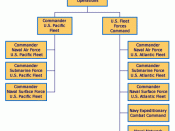In this section of the paper we will discuss Sweden's organizational norms and how they compare to the United States. Some of the topics we covered include compensation, risk acceptance, communication, organizational structure and power distance.
First we will cover compensation. Sweden prides itself on its worker benefit laws. They consistently trend to be the first nation to establish pace-setting or breakthrough laws. The United States tend to adopt these benefit programs years after first adoption of such programs in Sweden.
One example of Sweden benefits is that they get an average of 27 paid vacation days, where in the U.S. the average is 12. Sweden also offers lunch vouchers to employees for purchasing off site meals at cooperating eateries. Also Sweden has the most generous maternity and paternity leave by granting employees about 75% of their salaries for the first 12 months and 3 more months available at further compensation.
Next, we will talk about risk acceptance. Swedish executives are generally more willing to take risks than executives in the U.S. as well as most other countries. An international study showed that Sweden had the lowest "uncertainty avoidance index"� by far among the countries it was compared to. In other words members of this culture do not feel threatened by uncertain situations. In Sweden employees are most often promoted on work performance, therefor young men and women are willing to take risks in order to earn a leading position. In the U.S. people are often promoted based on seniority, so it often doesn't pay to take risks.
Another topic is organizational structure, which is how job tasks are formally divided, grouped, and coordinated. Swedish companies usually have a flat and team orientated structure, with few management levels. They are decentralized, which helps lead to faster decision making. The...


